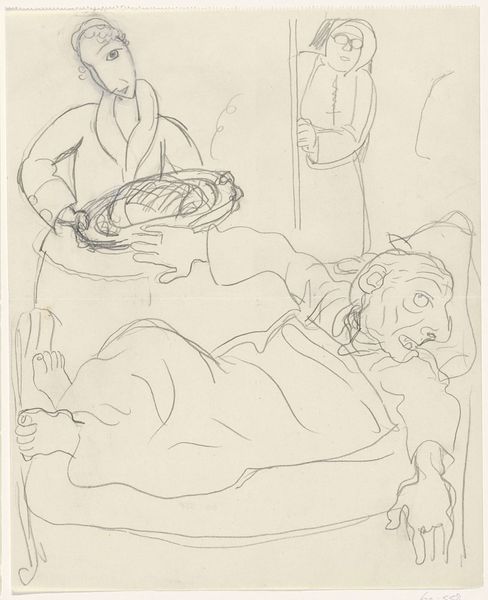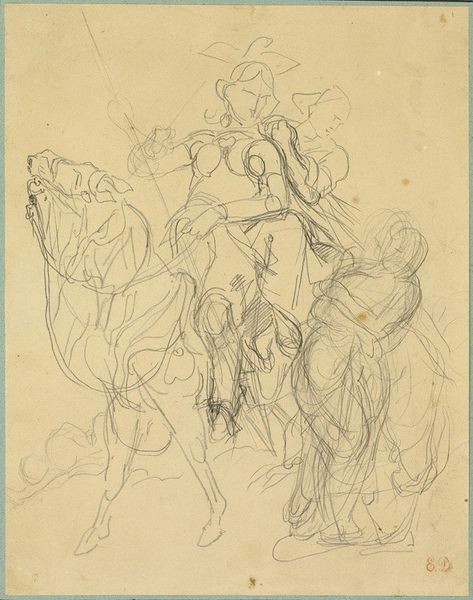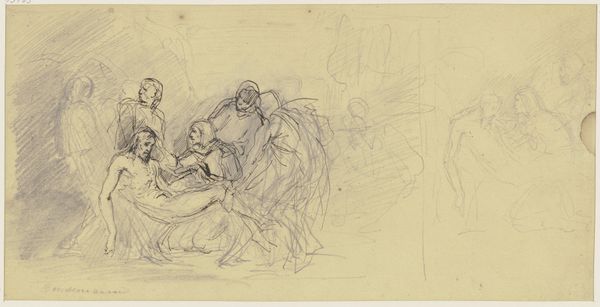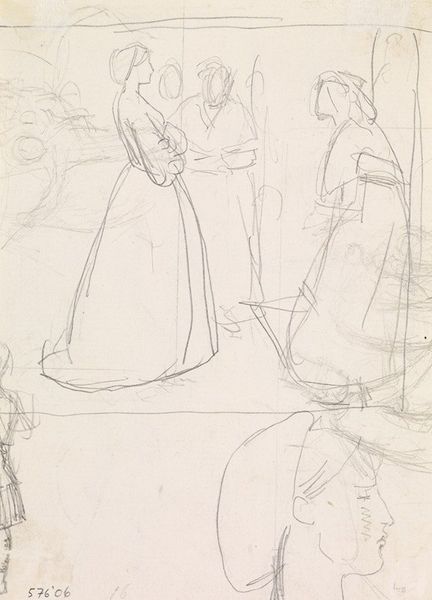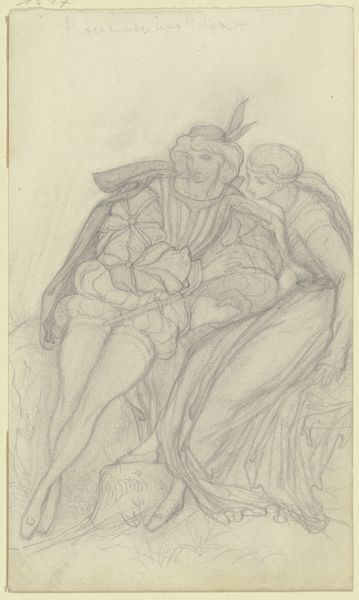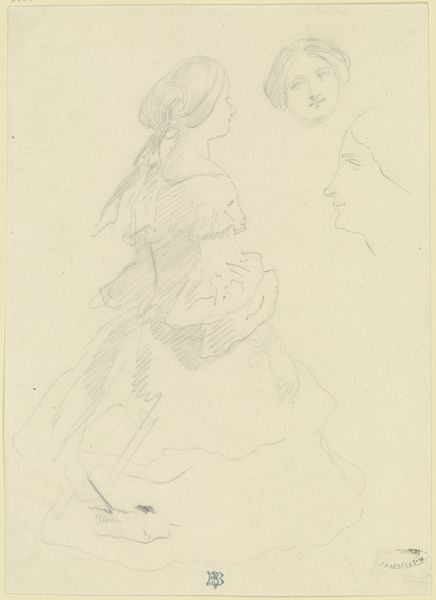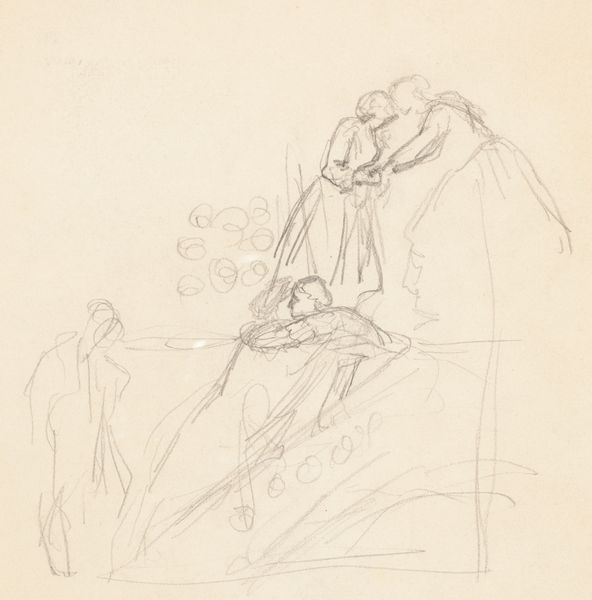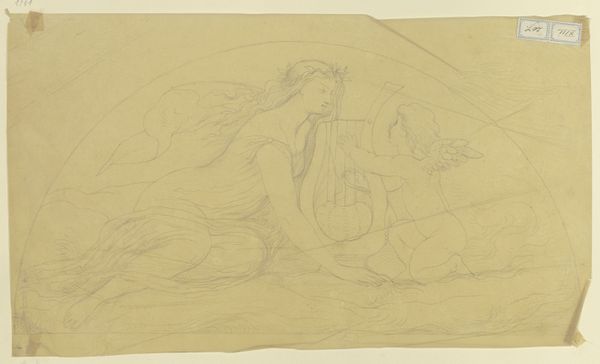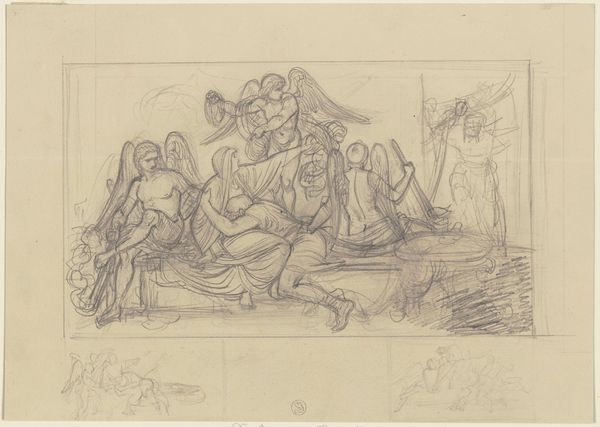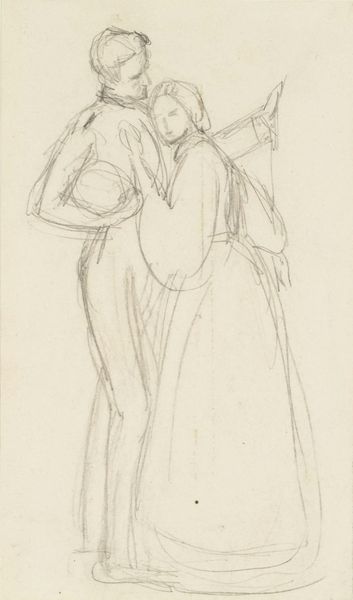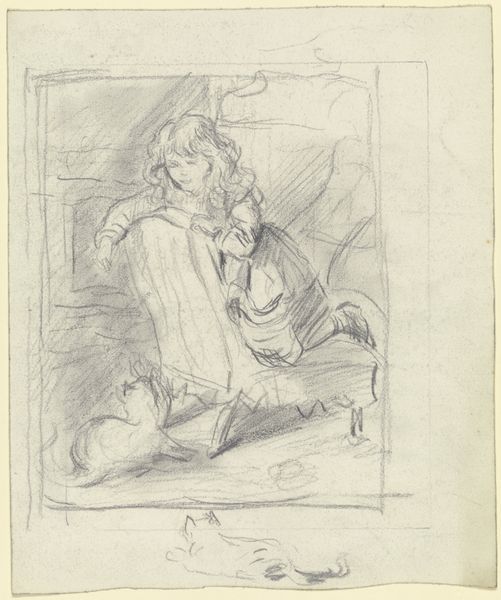
Dimensions: height 254 mm, width 205 mm
Copyright: Rijks Museum: Open Domain
Curator: The work before us, currently held at the Rijksmuseum, is entitled “Karikatuur van Leo Gestel op zijn ziekbed,” dating sometime between 1911 and 1941. It is a pencil drawing, a portrait rendered with quick, confident lines. Editor: Immediately, I'm struck by its vulnerability, and despite the title suggesting caricature, there’s an element of stark reality. The thin lines, the paleness of the medium, the depiction of sickness…it's very raw. Curator: Yes, the line work is crucial here. Notice how Gestel utilizes a combination of hard and soft lines to define the contours of the figure on the sickbed, exaggerating certain features while subtly implying the surrounding atmosphere and support figures. This evokes a sense of movement, imbuing the entire composition with energy. Editor: It's interesting that you point out the "energy" here. What about the visual cues suggesting confinement? How does the sickbed itself, and the figures hovering around suggest a limited, clinical setting – and, therefore, speaks of broader shifts in health care and its representation? Curator: While a more complete composition or background might suggest more complex interpretations, the immediacy of the lines points to gesture, more aligned with form that communicates movement and quick study than careful narrative. This piece utilizes line to define character in a manner resonant with other drawings in Gestel's ouvre. Editor: I see your point. But in its fragmentary, impressionistic style, I feel that there is an implied context in its visual choices – in the selection of details that create more tension for our eyes. For me, its incompleteness emphasizes the themes of illness and care during a specified historical moment. Curator: That's an astute observation, focusing the work in the social history it comes from. It would then follow that a certain tension comes from this opposition between artistic intention and social framing – the artistic flourish struggling to show through within what may also stand as an image related to healthcare from a period long gone. Editor: Precisely. It reminds us of the role artists play in representing often concealed spaces. Curator: Ultimately, considering Gestel's sharp draftsmanship is important, but the implied message can be equally compelling in making a statement for an image of the time. Editor: An intersection that, to this day, asks relevant questions concerning care, artistry, and societal reflections.
Comments
No comments
Be the first to comment and join the conversation on the ultimate creative platform.

